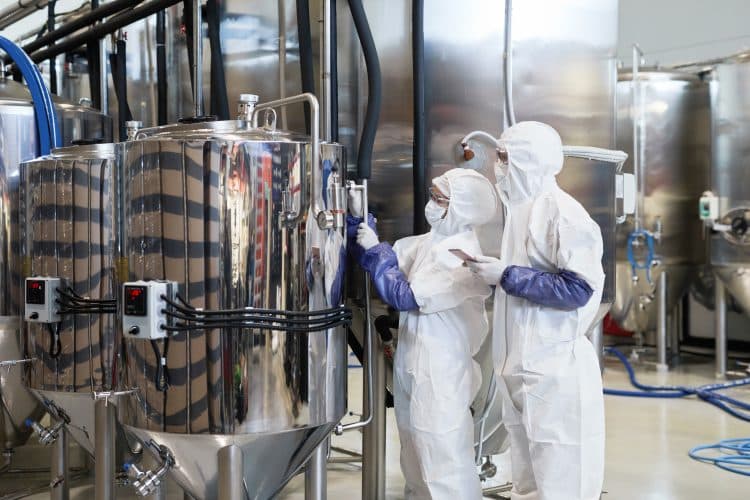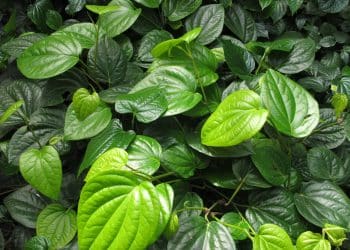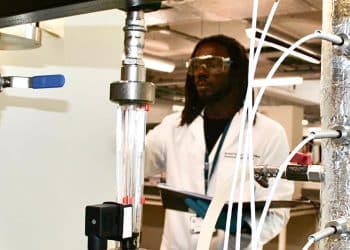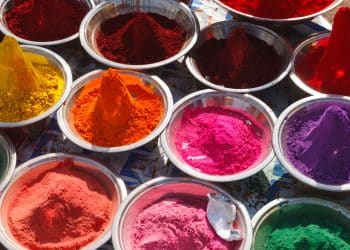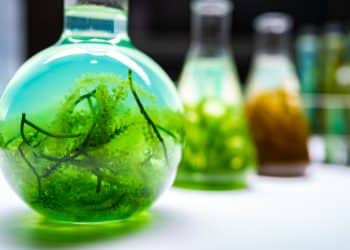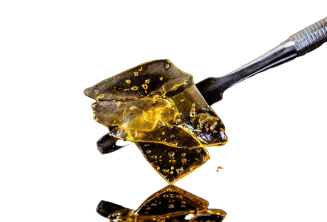Technology has always been a source of improvement in people’s lives. For some, this means communication over telecommunications networks, for others it could mean flying around the world, but for others the most exciting technologies are coming out of plants. Plants have always been essential for human survival, but the way we use them has continued to grow and change along with our societies. Today, plant extracts are used in ways that can almost feel like science fiction, and some experiments being conducted today can feel like it.
These new techniques are not only being used today, but they are also providing new opportunities at industrial scale. This includes opportunities within existing industries, but also new possibilities for connecting existing industries in new ways. By exploring some of the newest developments in food, cosmetics, and medicine, it is clear that plant extracts could result in technological improvements with significant benefits.
How Plant Extraction Improves Our Food
In the history of human civilization, one of the most important technological advancements was the development of agriculture. By cultivating our own food sources, humans no longer needed to search and migrate to survive. Less effort gathering food allowed for more effort spent elsewhere, and eventually societies flourished. Today, agriculture’s primary concern is not reliability, but how to maximize efficiency. This is where plant extraction is starting to emerge as a powerful tool to improve multiple agricultural processes.
One such problem that farmers constantly struggle with is how to protect their crops from all kinds of pests. For many, this requires synthetic pesticides, many of which have serious health and environmental risks associated with heavy usage. [1] Instead, researchers are developing a new insecticide based on solanum plants. [2] Solanum is a complex genus that contains over 2500 species, including potatoes, tomatoes, and the more toxic nightshade.
The toxic elements in certain solanum species repel bugs, but are only harmful if consumed. In fact, these pesticides are biodegradable, so they may dramatically reduce the negative consequences for both humans and the environment. Going beyond the issue of protection against unwanted pests, the next challenge that farmers have to overcome is how best to improve their yields.
One of the most exciting new tools plant extraction is creating are called biostimulants, which help the plant cells to better absorb and use essential ingredients during the growth stage, leading to heartier mature plants. [3] Biostimulants work differently than fertilizer, but they can all be used in conjunction as a way of supplementing traditional agriculture practices.
One of the most promising sources of biostimulants comes from seaweed extracts, which can provide natural pesticides and less common nutrients the plants otherwise wouldn’t have access to. Once the plants ripen, many of them are processed into various food products. In the United States, many of these processed foods have a negative reputation, but that does not need to be the case. [4] The source of negativity surrounding processed foods has to do with why they are processed.
By adding components that make the foods more flavorful, colorful, or addictive, many companies have sown distrust amongst consumers. Instead, what many food scientists are trying to do now is process the foods so that they are healthier, not more addictive. Take fortified foods as an example. [5] Fortified foods rely on plant extraction techniques to add nutrients to foods where they would otherwise not be present. While these small alterations may seem inconsequential, the increased nutritional value can have carryover effects that have an overall improvement to many people’s health.
A similar technique researchers use involves adding nutrient enhancers, which are additional ingredients added to a food that make the primary ingredients more effective, into new foods. [6] One such example is vitamin C. Vitamin C consumption can increase human absorption of iron into the bloodstream by two to three times. With this in mind, adding vitamin C to products that contain iron makes them more robust for consumers, and this small change may help products to stand out.
One final technique that uses plant extraction to improve our food quality is enzyme addition. [7] Enzymes are what causes chemical and molecular changes within a solution, and so food providers may have different reasons for adding them to their products. Some may be to help other nutrients be activated or absorbed in the body, but others may do so to prevent their products from spoiling so quickly.
This could mean milk that doesn’t produce a lactose intolerance or perishables that can last longer than ever on shelves. These techniques, while useful for food, can also be applied to other industries as well. Plant extracts are now creating all kinds of new products that produce many unexpected responses in humans.
How Cosmetics Could Connect Food to Medicine
The advantages of these extraction techniques quickly crossed over from food and agriculture into other industries as well. Aside from eating plants, one of their most valuable uses comes in the form of our physical appearance. Cosmetics rely on plants for pigmentation, perfume, and, most importantly, skin care. Colors and aromas have been a part of cosmetics for a long time, but skin care is the area with some of the most revolutionary discoveries.
One of the most promising ingredients for helping troubled skin is the European horse chestnut. [8] One study found that bark from this tree was 80% more effective in limiting capillary fragility, strengthening skin cells from within, and reducing the onset of early wrinkles. Wrinkle prevention is one of the largest subcategories in the cosmetics industry, and performing effectively will be in high demand. Wrinkles are only the beginning of dermal imperfections that plant extracts may be able to fix.
Thanks to plant extracts from papaya, scientists have found a chemical that may help to dramatically limit the visibility of scar tissue.[9] The study used the extracts on rats with burn wounds and found that while the papaya did not speed up recovery, it did make the scars less noticeable.
The belief is that the compounds within the papaya helped to disinfect and clean the wounds while they healed, and this allowed for a cleaner recovery with fewer discolorations. Skin care products containing these compounds have the potential of connecting cosmetics to the healthcare field. These are products that while they are designed to provide beauty, could also provide additional benefits similar to the way fortified foods can increase nutrition.
The bridging of industries may even go a step further if extracts can be pulled from material that would otherwise be thrown out. Take the example of the Suriname cherry, which can also be used as a food source like chestnuts and papayas. [10] Taking discarded rinds, scientists were able to identify a compound within the cherries that has analgesic properties. By using the rinds, cosmetic companies could pay the food manufacturers to be their suppliers, and they could design a topical rub that smells like cherry and relieves minor aches and pains.
The major obstacle to doing so has to do with how the product is intended to be used.
Preventing wrinkles or scars certainly falls under the purview of cosmetics, but pain relief may be bordering on pharmaceuticals. This may bring unwelcome oversight in the form of increased regulatory scrutiny, and it may not cover any costs required to develop the products. By emphasizing any secondary health benefits of the ingredients as added benefits and not the primary use, cosmetics manufacturers could find themselves in an exciting position between several industries. In order for the industry to decide to pursue these products, though, the revenue potentials would need to outweigh the regulatory risks.
How Plant Extracts Improve Our Medicine
With more than 28,000 species of recognized medicinal plants, the medical field’s use of plant extracts has the potential to dwarf both food and cosmetics. [11] This is because when individual compounds are isolated from their botanical materials, they can be combined, strengthened, studied, or otherwise improved to maximize their benefits. As the plant extract industry grows, so does the potential for developing new pharmaceuticals and treatments. To do so, researchers look to utilize plant extracts in one of three ways.
The first is to start with a common plant, and try to identify new ways of using the compounds within it. This is happening with mangos, which are being used to develop new medicines that combat breast cancer, especially after it has metastasized. [12] The exact mechanism for this is unknown, but this means that the components providing the benefits may have some undiscovered quality that could be useful in fighting other cancers as well.
The second way that researchers are using plant extracts involves targeting a specific disease and customizing the treatments to that disease. Take, for example, Alzheimer’s disease. [13] Unlike breast cancer, Alzheimer’s is a neurological disorder and its causes are less well understood. As a result, scientists are using extracts from multiple plants to develop a balanced mix that could result in organic treatments. Results are promising, but it can be difficult to evaluate progress against a disease that takes years to manifest and is often difficult to treat.
The last way that the medical field is using plant extracts involves researching less well understood plants to better quantify their constituents and develop new medicines from them. One such species, moringa oleifera, is native to the Indian Subcontinent and may produce multiple physiological responses like antibacterial, antitumor, antispasmodic, hepatoprotective, and many more. [14] Plants like this may result in a panacea of new pharmaceuticals, increasing revenue streams while simultaneously improving available treatments. These are only three examples in a giant industry that relies on constant innovation.
Medicine, more so than any other field, is on the cutting edge of plant extraction research. Their industry relies on advanced research to stay ahead of the competition, but they represent the numerous benefits plant extracts bring to multiple industries. Whether it is opening new areas of research in a single field or connecting separate firms in new ways, plant extracts represent some of the most significant technological advancements, all of which will continue to improve our quality of life.
References:
- Kumar, Vijay, et al. “Environmental exposure and health risks of the insecticide monocrotophos—a review.” J Biodivers Environ Sci 5.1 (2014): 111-120.
- Chidambaram, Kumarappan, et al. “Medicinal Plants of Solanum Species: The Promising Sources of Phyto‐Insecticidal Compounds.” Journal of Tropical Medicine 2022.1 (2022): 4952221.
- Ali, Omar, Adesh Ramsubhag, and Jayaraj Jayaraman. “Biostimulant properties of seaweed extracts in plants: Implications towards sustainable crop production.” Plants 10.3 (2021): 531.
- Elizabeth, Leonie, et al. “Ultra-processed foods and health outcomes: a narrative review.” Nutrients 12.7 (2020): 1955.
- Kandyliari A, Potsaki P, Bousdouni P, Kaloteraki C, Christofilea M, Almpounioti K, Moutsou A, Fasoulis CK, Polychronis LV, Gkalpinos VK, Tzakos AG, Koutelidakis AE. Development of Dairy Products Fortified with Plant Extracts: Antioxidant and Phenolic Content Characterization. Antioxidants (Basel). 2023 Feb 16;12(2):500. doi: 10.3390/antiox12020500. PMID: 36830058; PMCID: PMC9952465.
- Meena, Nirmal Kumar, et al. “Plant extracts as nutrient enhancers.” Plant Extracts: Applications in the Food Industry. Academic Press, 2022. 143-164.
- Sowbhagya, H. B., and V. N. Chitra. “Enzyme-assisted extraction of flavorings and colorants from plant materials.” Critical reviews in food science and nutrition 50.2 (2010): 146-161.
- YUSOF, AHMAD ASMADI. “The effects of Carica papaya Linn. latex on the healing of burn wounds in rats.” Jurnal Sains Kesihatan Malaysia 3.2 (2005): 39-47.
- Owczarek, Aleksandra, J. Kolodziejczyk-Czepas, and J. Woźniak-Serwata. “Potential Activity Mechanisms of Aesculus hippocastanum Bark: Antioxidant Effects in Chemical and Biological In Vitro Models, Antioxidants; 2021; 10 (7): 995.”
- Ogugofor, Martins O. “Evaluation of the nutritional compositions and analgesic effects of the flavonoid fraction of Eugenia uniflora Ripe Fruit Pulp.” American Journal of Ethnomedicine 5.1 (2018): 7.
- Allkin, Bob. “Useful plants–Medicines: At least 28,187 plant species are currently recorded as being of medicinal use.” (2017).
- Yap, Kah Min, et al. “Mangifera indica (Mango): A promising medicinal plant for breast cancer therapy and understanding its potential mechanisms of action.” Breast Cancer: Targets and Therapy (2021): 471-503.
- Bordoloi, Smita, et al. “Some promising medicinal plants used in Alzheimer’s disease: an ethnopharmacological perspective.” Discover Applied Sciences 6.5 (2024): 1-20.
- Ghimire, Saurav, et al. “Moringa oleifera: A tree of life as a promising medicinal plant for neurodegenerative diseases.” Journal of agricultural and food chemistry 69.48 (2021): 14358-14371.
